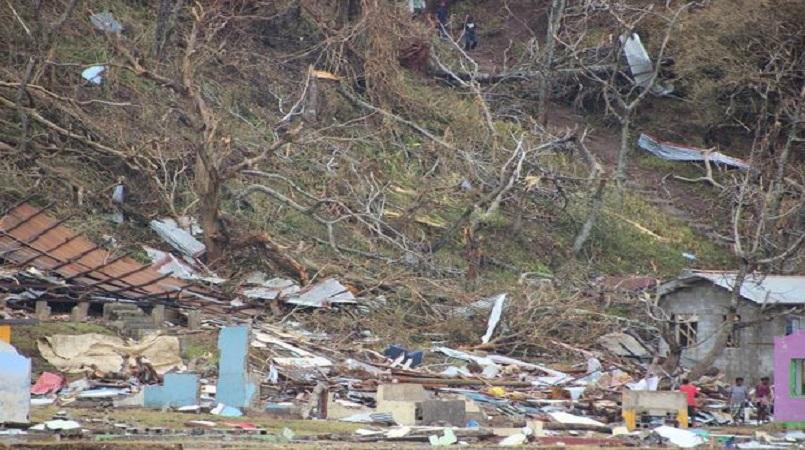
US$161 million is the current preliminary damage assessment figure caused by cyclone Winston in Fiji.
The number of completely destroyed homes around the country is 7,043.
The number of partly damaged homes is 11,111.
“The status summary that we have so far the deaths have not changed. We still have it at 43. The number of evacuation centres have gone down to 6,033 and the number of evacuees have further gone down to 20,465. The damage estimate by sector I had mentioned with a total of so far preliminary figures $343.3 million. And the highest is the agricultural sector for non sugar which is $120 million (US$56.5 million). The sugar sector is $80 million (US$37.7 million),” revealed the National Disaster Management Office Director, Akapusi Tuifagalele.
Tuifagalele says the local medical teams assisted by overseas counterparts are on the ground working around the clock to contain the possibility of outbreaks.
“The Ministry of Health has actually been working around the clock in the various areas. For example the worst hit areas like Koro, Vanuabalavu. They have set up their teams there and we also have been heavily assisted by the medical teams from overseas through the Canterbury boat from new Zealand and likewise the Canberra from Australia,” added Tuifagalele.
Among a top Government priority is to re-open schools immediately this week.
As of Friday, 69 schools were still being used as evacuation centres.
Tuifagalele says the NDMO has a plan to accommodate the thousands that need to vacate for school to begin.
“We are looking forward that by today (Sunday) the Evacuation Centers should be closed so that we can allow the classes to resume there maybe one or two that may have some difficulties. We will have to discuss further and see some of the communities we know that they may not have a place to go too. We are trying our best to provide big tents flown in from overseas to accommodate them and to allow the schools to be vacated so they can start classes,” he said.
Meanwhile, rations for a month have now all been delivered to all affected communities.
DISMAC officials are in continuous discussions with divisional commissioners to ensure communities do not abuse these rations.
“These kinds of things, the government does not condone where you try to gain from the things that are provided because these are the basic necessities that are provided to the affected families who need it for their survival.”
Tuifagalele says food rations have been distributed to most of the affected areas.
There are 20,465 people living in 633 evacuation centres.
The Eastern division has 10,057 people living in its 318 evacuation centres.
The Western division has 7,899 people occupying 261 evacuation centres.
The North has 2,509 people living in its 54 evacuation centres.
